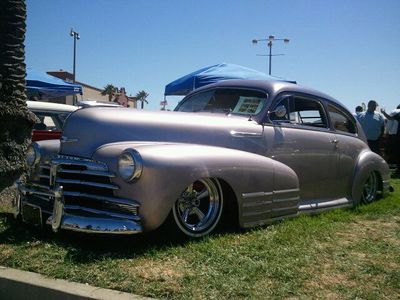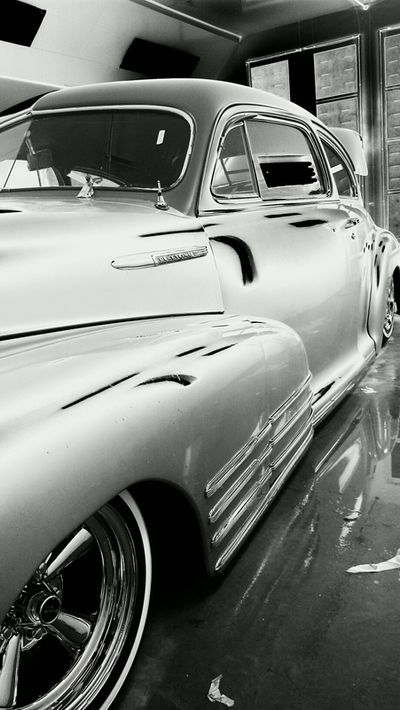Roger Squires' 1947 Chevrolet Fleetline - Pastime

















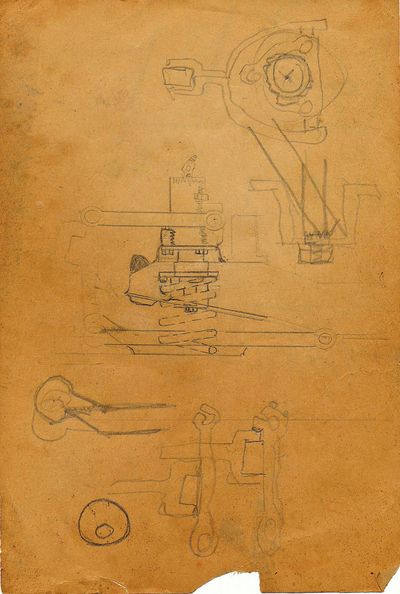













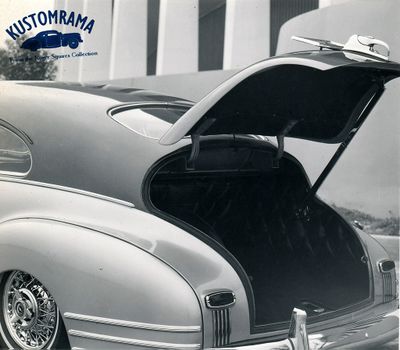














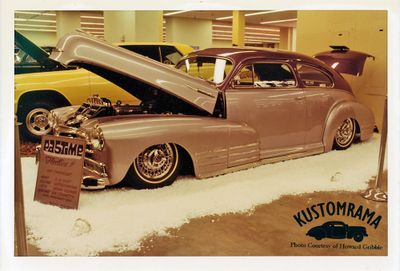






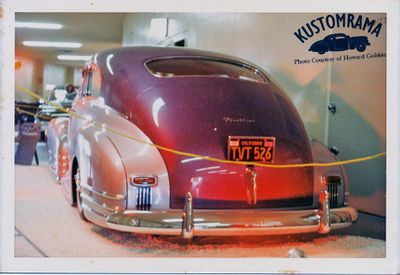

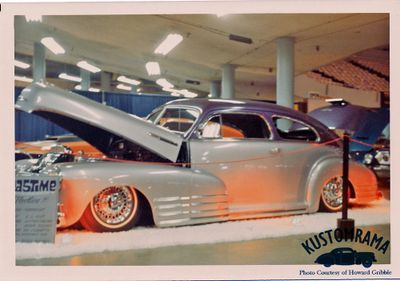
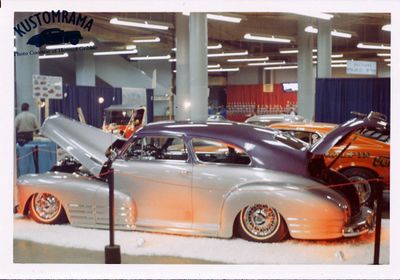
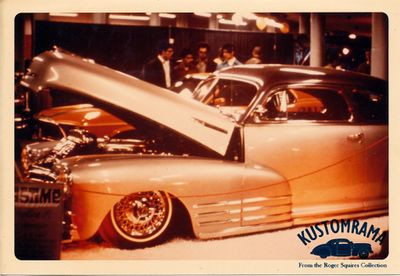






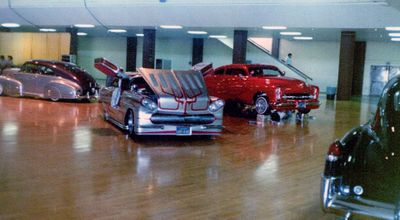
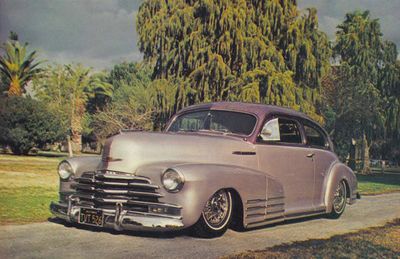



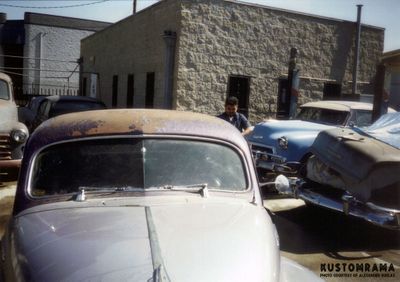


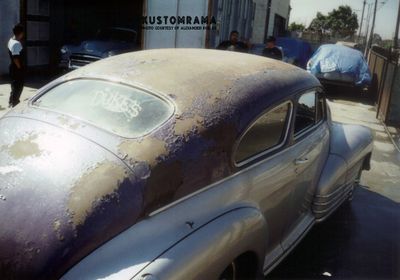


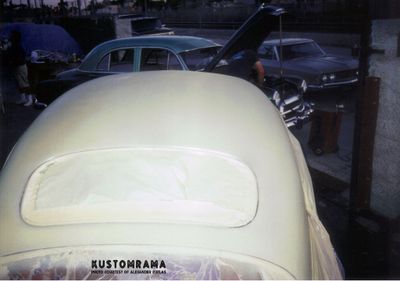
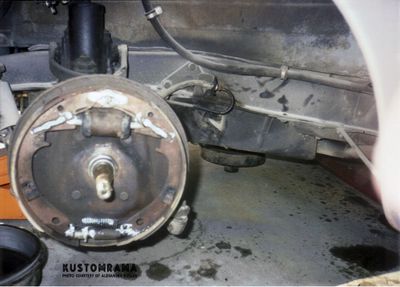







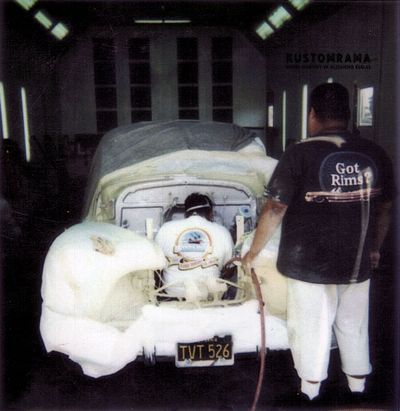

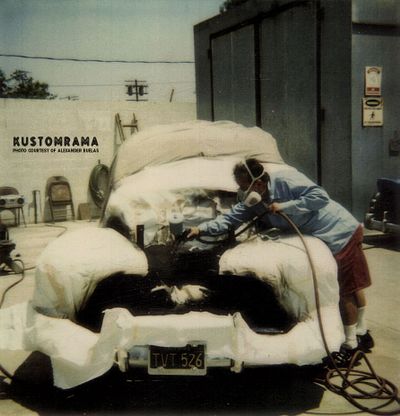
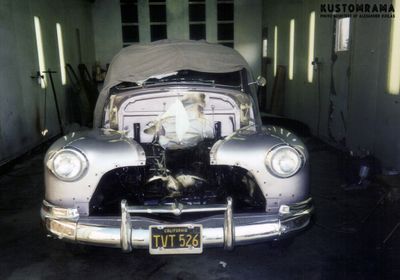







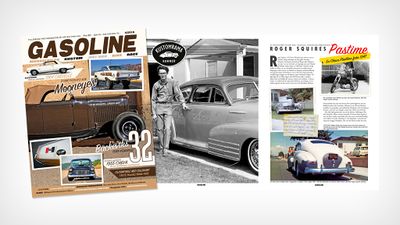
1947 Chevrolet Fleetline owned and restyled by Roger Squires of Torrance, California. Roger grew up in the Southern California community of Inglewood. Like a lot of kids growing up in the 1950s and early 1960s he was enamored with hot rods, customs and motorcycles. He had built several cars and bikes in his teenage years, and acquired the Fleetline from someone living in the area in 1965. It was a clean example with few if any modifications, and Roger set to work turning it into a mild custom. Before long he found himself the owner of five Fleetlines; the future show car, a daily driver, one for his wife and two parts cars! About this time Roger was away for military service for a while, but wrote to a friend that when he returned he would "really put the '47 on the earth!" And this indeed did happen. Roger had a vision of how he would like the car to look and that was simple and clean. The six-cylinder engine would remain but it was treated to several nice chrome accessory dress up pieces and an induction system from a 1954 Chevrolet Corvette. No body modifications were undertaken, and Roger thought the stock trim on the Chevy was tasteful and an asset to the car's overall appearance so it stayed in place. This in itself represented a radical departure from the custom car practices of the day, and it would ultimately prove to be a farsighted prediction of trends to come.[1]
Contents
Hydraulic Lifts
As Roger had promised in advance, he began the installation of the hydraulic system that would raise and lower the car. At the time there were few people who understood how to make a car operate properly on hydraulic lifts, but Roger had a good grasp on things mechanical and was able to fabricate a system that was state of the art for the time. Dropped spindles had been around for a while but few on the street used them because of the expense involved. It was much cheaper to lower a car by just heating or cutting the springs, but Roger invested in a set of dropped spindles that allowed him to lower the car without cutting an excessive amount from the front coils. This permitted the car to ride and handle more like an original stock vehicle. The hydraulic cylinders were relatively short in stroke, allowing for enough travel to achieve a more or less stock height but nothing more. A single tail gate style hydraulic pump was used, mounted in the area between the grille and the radiator. It was powered by a single 6-12 volt battery (later the entire electrical system was converted to 12 volts, though still utilizing a single battery). The car now laid out nicely thanks to some modification to the floor in the rear. Ample trunk space remained however because there was no hydraulic equipment or batteries in the trunk. Roger had achieved his stated goal of laying it on the ground.[1]
Paint and Upholstery
The lower part of the car was painted in a 1965 Chevrolet color called "Evening Orchid". The top and sloping rear deck was painted in a custom mixed Purple with very light dusting of cob webbing and "diamond dust" made from ground glass. This does not come out in most photos. The paint was bought at A & H Paint, and the car was painted by R.D. Vogt. A custom black interior was made by Tijuana Upholstery in Tijuana, Mexico. Tijuana Upholstery did several cars for Roger and his friends. The cost was about $ 125. Later on he had a local upholstery shop do the trunk and carpets as well. Early photos of the car from Roger's collection, dated July 1968, shows the car with the brand new upholstery, rolling on chromed and reversed wheels. These were later replaced with genuine wire wheels from a Thunderbird. This represented another bit of a departure from the norm, as wire wheels were a rarity on custom cars of the day. When wires were seen they usually originated from the Buick Skylark. It would be well into the 1970s before various manufacturers began to produce wire wheels for the custom car market. The lifts and wheels were installed about the same time, around 1968 - 1969.[1]
Selling the Car
With the Fleetline finally complete and to his liking Roger started entering it in local car shows, most notably at the Los Angeles Convention Center and the Long Beach Arena. Every custom needed a name and Roger chose "Pastime" for his, a clever but subtle play on several meanings of the word. According to the show sign that Steve Feinburg made for the car, total investment at the time was $3200. The car was an immediate hit, much admired for its understated but elegant appearance. Roger's efforts were rewarded with many trophies and awards, and after showing the car for two or three years Roger came under some pressure from the car show promoters to make modifications that they felt would "freshen" the car's look. Roger didn't see it that way, feeling that he had built the car as he thought it looked best and saw no reason to make a change solely for the sake of change. Partly as a result of this bit of silliness, but also because Roger and his wife needed money for a down payment on their first home, the decision was made to sell the Fleetline. At the time, around 1972 Hot Rod Magazine had a classified advertising section in the back of the publication. The car, along with a picture, was listed there at a price of $2500.00. A mere pittance today, that was a considerable sum at the time. One interested buyer from New York called and asked if the car could be driven. Roger said sure, and offered to deliver it for expenses. In an interview Roger did with Kustomrama in 2013 he said that he thought the deal fell through because the potential buyer could not understand the idea of an adjustable hydraulic suspension and didn't really believe the car could be driven.[1]
The Duke's Years
The car did eventually sell to a gentleman from Orange County named Chayo Olguin. Chayo was a member of a car club called The Chosen Few when he bought the car. Chayo would later call on Roger to fit and paint fender skirts for Pastime. Roger would even show the car for Chayo on a few occasions. In this configuration the Fleetline was seen in many car shows and finally saw print in a number of automotive publications. It was also seen briefly on a nationally televised news show.[1] After buying Pastime, Chayo became a member of the Duke's car club. In the 1980s he eventually sold it to fellow Duke's member Julio Ruelas. Before buying the car, Julio had taken the old custom everywhere for Chayou, representing the club. In the mid 1990s Julio's brother Fernando decided he would bring Pastime back to life, as it had been sitting for some years, and the paint on the top and trunk had started to crack. By then several people had inquired Julio about buying it, but he refused to sell it. Fernando's body shop was located next to Julio's house, so they hooked a battery charger to the hydraullics and raised it so they could push it into the shop. In the shop, they pulled the old motor out, before Jason sand blasted the cowl section and engine compartment. Julio had a rebuilt 235 cylinder engine put away that they installed in the car. Before the engine was installed, Fernando painted the engine and cowl section the same color as the body. The firewall bottom splash pan and the underside of the hood were paintted purple pearl over a black base. A single carburetor was installed to get it running and to move it around, as Fernando was in the process of rebuilding the side draft 3 carbs that Roger Squires once installed. It was then towed to the muffler shop to have the pipes redone with the single carb. After Jason had gone over the brakes, they got Pastime running again, and according to Alexander Ruelas "she ran damn good"! Fernando then stripped the whole top and trunk down to metal before he covered it with etching primer around 1996 or 1997. In the summer of 1999 the Duke's held a BBQ at Fernando's shop. Streetlow Magazine covered the event, and photos of the car can be seen in the story from the party. Chayo was invited to the event, and after he had seen his old car again, he told Julio he knew he had made the right choice selling it to him. Later on that Summer, Chayo passed away to cancer. After that Julio gave Jason the key of the car, and he told him to drive it around the block so he could park it and put it away at his house. Alexander tagged along with his brother, and that was the first and last time that the two brothers got to ride in the car. Alexander remembers that it was so smooth to ride in with the coil springs, that it felt like they were driving a Cadillac. After the car was parked at Julio's house, Jason and Alexander installed the sidedraft 3 carbs along with a pair of Fenton headers. In 2007 Juilo passed away to heart failure. It all happened so fast that it was a shock to everyone. Fernando took the passing of his brother really hard, and the car sat untouched until Julio's widow one day sold it to fellow Duke's member Tommy Brizuela in 2011. Jason and Alexander, who had evolved strong feelings for their uncle's old car was not informed about the sale, and they were really bummed when they found out.[2] Later on, Tommy left the Duke'. In September of 2013 the necessary restoration was almost completed, and the "Pastime" Fleetline had recently been seen publicly several times. Interestingly, each owner of the car appreciated Roger's original concept and vision enough that no effort was ever made to alter the look as envisioned by Roger back in the 1960s.[1]
Pastime and the Evolution of the Lowrider
“Pastime” has been referred to as an important milestone in the history of lowrider cars. Roger never considered his Fleetline a lowrider, a term that was just beginning to gain widespread popularity and usage in the late 1960s. Roger thought of his car as a custom, or more specifically, a mild custom. Mild custom was a legitimate category in the judging at the car shows of the time and was simply defined as a car that had been custom modified to the owner's particular taste by the use of minimal modification. And that's exactly the look that Roger achieved. The radically lowered stance was a matter of personal preference, as was the decision to retain most of the badges and chrome trim. Two tone paint was a feature on the factory production Fleetlines, but Roger's choice of attractive but subdued colors greatly enhanced the effect. In the end his goal was nicely achieved. And yet the "lowrider" or "bomb" connection is undeniably present. It is a fact that all through the 1950s and up into the 1960s older Chevrolets, Fleetlines in particular, were a popular base for customs owned and built by Mexican/Americans in the Los Angeles area. The one constant with these cars was that they were lowered front and rear, sometimes radically. Thus the name, "lowrider". Beyond that they resembled other mild customs of the day with chrome and door handles removed, spotlights, whitewalls, custom interior and fancy hubcaps. Only later, in the late 1960s and moving into the 1970s, would the owners of these old cars start to add the stock trim and multitude of accessories that define the "bomb" as we know it now. In 2013, as he did then, Roger recognizes that his Fleetline mirrored the style of what could be called the earliest lowriders. And while Roger's car was among the first to be seen featuring the stock chrome trim along with the radical lowering he does not claim to have invented the bomb. It was instead more a case of several individuals gaining an appreciation for a particular look at about the same time. Roger was one of them, doing his own thing in his own time, and what he created has stood the test of time.[1]
Magazine Features and Appearances
Lowrider Magazine April 1979
Gasoline 4/2016
References
Did you enjoy this article?
Kustomrama is an encyclopedia dedicated to preserve, share and protect traditional hot rod and custom car history from all over the world.
- Help us keep history alive. For as little as 2.99 USD a month you can become a monthly supporter. Click here to learn more.
- Subscribe to our free newsletter and receive regular updates and stories from Kustomrama.
- Do you know someone who would enjoy this article? Click here to forward it.
Can you help us make this article better?
Please get in touch with us at mail@kustomrama.com if you have additional information or photos to share about Roger Squires' 1947 Chevrolet Fleetline - Pastime.
This article was made possible by:
SunTec Auto Glass - Auto Glass Services on Vintage and Classic Cars
Finding a replacement windshield, back or side glass can be a difficult task when restoring your vintage or custom classic car. It doesn't have to be though now with auto glass specialist companies like www.suntecautoglass.com. They can source OEM or OEM-equivalent glass for older makes/models; which will ensure a proper fit every time. Check them out for more details!
Do you want to see your company here? Click here for more info about how you can advertise your business on Kustomrama.




